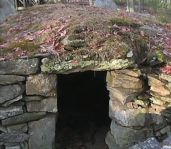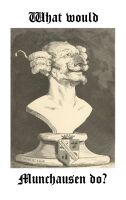|
by Jim Brandon  A Modern Invocation to the Earth Spirit
A Modern Invocation to the Earth Spirit
I found a copy of this book in a bookstore in Hopewell, Ohio, as my wife and I were heading to Maryhill, Washington, to see the replica of Stonehenge there, and since Jim Brandon's Weird America was our guide on that journey, I was exceedingly pleased to find another of his works, quite by chance. On my first reading of this, the second and last published work by Jim Brandon (at least under that pseudonym), I was disappointed. Weird America is a guide to places of mystery in the United States, but Brandon hinted constantly that underneath these strange phenomena were forces as yet undefined and inexplicable. The Rebirth of Pan builds on that idea, postulating that modern scientists and journalists exclude too many factors in their efforts to present a consistent account of events, and ignore larger patterns in so doing. These patterns, such as the tendency of catastrophes and paranormal phenomena to occur in the vicinity of trailer parks, the frequent proximity of enigmas to reservoirs, mines, and caves, and the recurrence of the number 23 in disasters, accidents, and Fortean events, all indicate to Brandon that the earth is speaking to us, however unintelligibly. Brandon is not certain what the earth is trying to say to us: perhaps that our actions are out of balance with the universe, and dangerous to ourselves and the earth itself: the UFOs, biologically impossible monsters and spook lights which appear at nuclear plants and military installations could be warnings to quit playing with the biosphere. His interpretation of structures which have been classified as being of Indian origin by mainstream archeologists surpasses strange: he posits that there is no real proof that they were made by humans, and that in fact they are probably manifestations of the earth spirit. He goes so far as to suggest that on occasions life may generate spontaneously out of these earth mounds, like the various homunculi of alchemy, and that fossils are not records of past life, but future life developing out of stone. The other chapters in the book are similar in spirit and structure, hinting that we need a new science, a science that would recognize these data of the damned. Brandon speaks in Charles Fort's tongue, pointing out the feebleness and foibles of modern science, but with a different intention and spirit. Fort was more concerned with obfuscating issues than clarifying them, writing science fiction disguised as hypothesis. To paraphrase Le Guin's comment on James Branch Cabell, Fort doesn't believe in his dreamworld, but he doesn't believe in our science, either. Brandon, in contrast, very much believes in the world he has created in his books. If read as a scientific alternative to modern archaeology, biology, and other such schools of thought, Rebirth of Pan is disappointing, but Brandon is a master of disguise. Like the alchemists of old, whose true aim--the perfect union of a man and a woman--was hidden behind their supposed goal of turning base metals into gold and silver, Brandon masks his mythopoeic intentions with scientific language. If the first chapter fails as a revision of biology, for example, it succeeds beautifully as a hymn to Pan, an invocation to the earth spirit who appears now not as the goat-legged god of Arcadia, but as a foul smelling apelike giant with glowing eyes who lurks in lover's lanes, creating a sense of panic in ardent youngsters in the backseats of automobiles. Brandon not only reclassifies these creatures as paranormal rather than biological, as many other writers have done, but places them in an esoteric context which makes apparent their rich symbolism. Brandon continues in a similar vein throughout the work, which is ultimately a paean to the spirit "coiling and roiling in the bowels of the earth, radiating out from the mouths of caves, flashing and grinding like a slow-motion lightning along fault lines, sprinkling out with the water from springs, pulsing like heartbeats along certain barely recognized runways across the land." He reinterprets current events in terms of old stories forgotten by the ever-optimistic Joseph Campbell, who saw mythology as therapy for our modern age, a way to lay to rest the Jungian Shadow. Brandon, in contrast, does not anywhere suggest a way out of our dilemma: we always have been, and always will be, haunted by these monsters of the id. The dark intentions and voyeurism of Keel's Men in Black are almost comforting, compared to the idea that the earth and its spirits are gibbering god-idiots, sentient, speaking to us urgently, out of great need and concern, but without being able to make themselves understood. |


